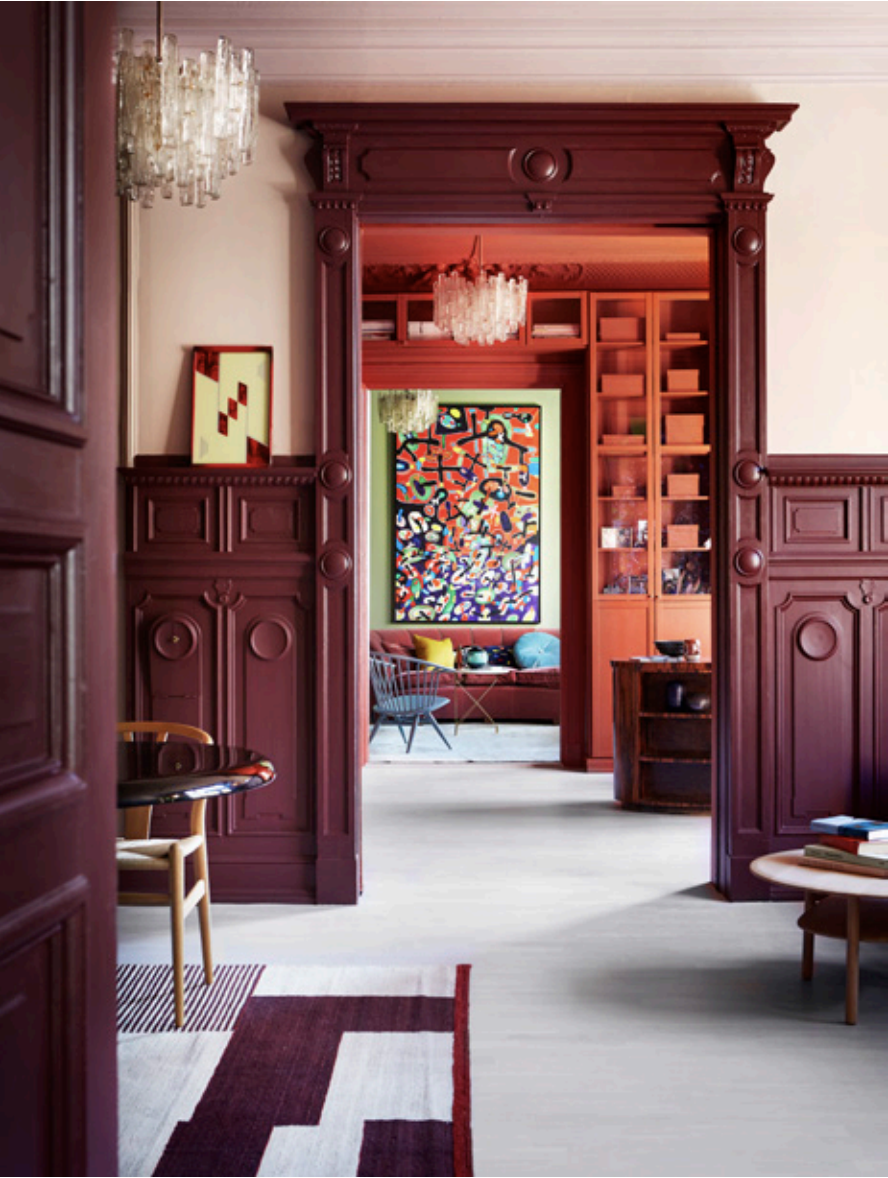Last month I started a series on how to create a color palette for your home and I kicked off the series by talking about complimentary colors. Complimentary color palettes consist of just two colors and I’d consider them the easiest of the palettes to master. So if you’re new to playing around with color, that post is a great place to start.
If you feel like you have a good grasp on complimentary colors and want to veer towards a more unconventional color palette, today’s post is for you! Let me introduce to you, Triadic Colors. What are triadic colors?
A triadic color scheme consists of any three colors that are of equal distance on the color wheel. The most common triadic color schemes are red, blue, yellow & green, orange, and violet. But you can also create a color palette of mixed hues such as blue-violet, red-orange, and yellow-green.
Let’s take a look at a few triadic color schemes in homes –
Red, yellow, and blue are considered primary colors. A lot of people shy away from using primary colors in their home because they are reminiscent of children’s toys. But when you play around with shades and tints of each color, you can bring in pink, maroon, navy, or gold for example, while still maintaining a red, blue, and yellow triadic color scheme. Take these homes for example –
Design by Ashley Montgomery Design | Photography by Lauren Miller
Design by Albion Nord
Design by Ashley Montgomery Design | Photography by Lauren Miller
Design by Ashley Montgomery Design | Photography by Lauren Miller

Design by Ashley Montgomery Design | Photography by Lauren Miller

Design by Ashley Montgomery Design | Photography by Lauren Miller

Green, orange, and violet are considered secondary colors. An uncommon color palette for sure, so if you like to be unique, this one is for you! You can incorporate this color palette using pure hues, or you can play around with tints and shades to soften the look.
Design by Ashley Montgomery Design
Image via Pure Original
Perhaps you keep the color palette subtle with green cabinetry and a small pop of violet and orange through artwork and gold or copper accents. Or perhaps you go bold by engulfing connecting rooms with each color of the palette.
Image via Pure Original
Design by Billy Cotton

Frida Ramstedt explains it so well in her book, The Interior Design Handbook. She suggests the 60/30/10 rule. “60% of the room features one main color. 30% of the room features a subtle, harmonous (i.e. not contrasting) accent color. And 10% of the room will be spiced up with one or two contrasting colors.” Then add one or two small black or white elements to ground the space.
With a triadic color palette, you have three colors to work with. It’s just a matter of deciding which color will fill each role in the 60/30/10 rule.
Do either of these color palettes spark a bit of joy within you? Can you see yourself incorporating these color schemes into your home? At the very least, I hope this inspired you to appreciate color and unconventional palettes.
Stay tuned, we’re talking about analogous color palettes next!
DO YOU WANT
The Inside Scoop
Where behind the scenes, exclusive advice, and candid conversations are sent straight to your inbox every week.














